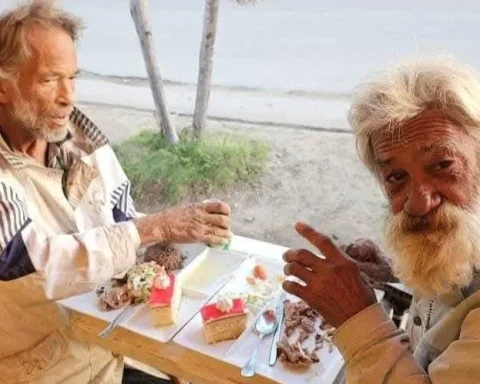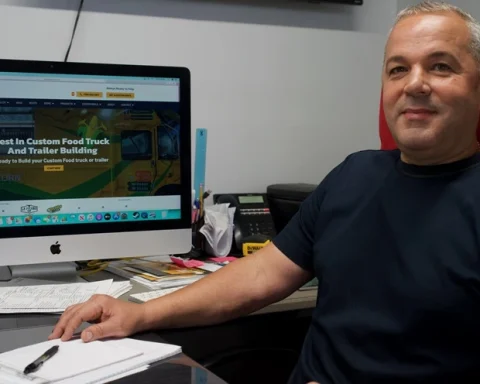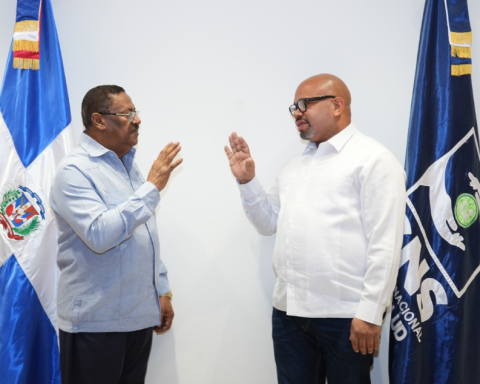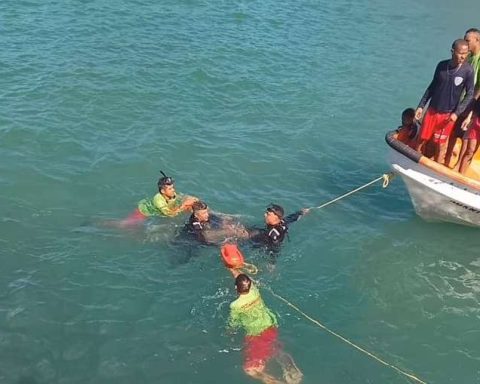Every morning, Sergio Ayala combed his daughters’ hair in braids, dropped them off at school and headed to work.
He loved his job as a field supervisor at his brother-in-law’s pest control company. But he wanted to have his own business and was studying to become a professional barber. She wanted to create a college savings fund for her three daughters and her youngest son.
In January, all those dreams were cut short. He believes his family contracted the coronavirus while practicing his barbering skills at his clients’ homes.
Ayala died of COVID-19 at age 37.
His partner, Lizeth Sánchez, worries about not being able to take her place.
“I think, ‘God, what if I can’t give them the education their father wanted for them?'” Sánchez said. “What if I can only pay for the education of one of them? That scares me.”
In California, younger Latinos are dying from COVID-19 at much higher rates than their white and Asian counterparts. Younger blacks are also dying at high rates, but the disparity is more stark for Latinos.
As more people get vaccinated, pandemic restrictions are lifted, and the economy recovers, families of young Latinos who have died will feel the loss for decades, not only from the pain but also from the financial hardships they will face in the long run. term.
It will be more difficult for your children to get an education and achieve upward social mobility, potentially widening the class divide for decades to come.
In California, Latinos between the ages of 20 and 54 have died of COVID-19 at a rate more than eight times higher than that of whites of the same age group, according to a study by the USC Department of Preventive Medicine.
Many, like Ayala, died before vaccines were widely available.
“Latinos are being hit from all angles,” said Christina Ramírez, a professor of biostatistics at UCLA. “This is going to be felt for generations.”
Ayala was raised by his single mother, a Salvadoran immigrant who lived in a small apartment in North Hollywood.
With her income from PestCal Exterminators, she saved enough to buy a home in Panorama City. It was a house with high ceilings – something he had always wanted – and big enough for his family.
In addition to covering most of the house and mortgage expenses, she took care of the girls, efficiently going through the morning routine after Sánchez left early for work. He spoiled them almost every day with a good snack or a toy from the 99-cent store.
After taking a bereavement leave, Sánchez returned to his job at a medical device manufacturing company. He had been looking forward to going back to school and earning his degree in sociology once Ayala became a barber.
“We were just harvesting [los beneficios del] I work hard, “he said.
Ayala’s children – Janelly and Melanie, both 10, Leanna, 7, and Sergio, 2- are too young to understand how their lives will change as they get older.
Before going to sleep, his children frequently ask God: “Why him? Why couldn’t it be someone else?” Sánchez said.
Rubén, 51, died on January 12. Cindy, 47, passed away the next day. Rubén had received his first dose of the vaccine just days before.
Brianna, her aunt and her grandmother still live in the same apartment, but they have all collaborated to cover the expenses. She is learning to build her credit and cut back on luxuries, like the Netflix family subscription.
She has begun to feel the pressure to move on with her life and get a job, but her pain has not been easy to overcome. In class, sometimes she disconnected from everything, thinking about all the things she had to put in order at home.
In August, she took a break from school to focus on her mental health. You’re applying for administrative jobs, but haven’t gotten any yet.
“They managed to balance all the accounts,” he says of his parents. “That is what I have to assume now. I have had to grow in a year.”
Researchers have long observed a phenomenon known as the Latin paradox. The average life expectancy of Latinos is longer than that of whites, despite poor access to medical services and higher rates of poverty and diabetes.
So many young Latinos have died of COVID-19 that researchers wonder if the paradox will hold.
As of December 1, California’s Latinos have collectively lost about 370,000 years of potential life to COVID-19, said UCLA biostatistics researcher Jay Xu.
The vulnerability of younger Latinos to COVID-19 is due to a confluence of socioeconomic and health factors, the researchers believe.
Lack of health insurance, or poor coverage with high copays, can lead people to delay visiting the hospital, increasing the possibility of a serious and fatal case, said Rita Hamad, associate director of the Center for Equity at UC San Francisco Health.
Latinos are more likely to live in overcrowded, multigenerational households with older immigrant relatives, have little access to healthcare, and work in essential sectors that require them to appear in person.
They are also more likely to live in heavily polluted neighborhoods and have higher rates of diabetes, hypertension and obesity, conditions associated with severe cases of COVID-19, according to the researchers.
Latinos have the lowest vaccination rate of any demographic in the state, and younger Latinos especially lag behind.
Reasons include misinformation on social media and inflexible work schedules that leave little time for an appointment. Public health experts and community advocates are trying to let Latinos know that they need the vaccine, especially since they have already lost so much to the virus.
The domino effect of each death is profound. Some of the younger Latinos supported generations of their families, both here and across the border.
Every two weeks, Jorge Ortega, 38, left his job as a delivery man, sometimes at midnight, and made the three-hour trip to Tijuana to see his girlfriend, Viviana Seguro Gaitán, and their newborn son.
In the 48 hours they spent together, the couple savored every moment, even when they were sitting on the couch watching movies all day.
When the weekend ended, Ortega returned to Los Angeles early Monday morning in time for work.
After a 12-hour shift, he was heading to his Los Angeles apartment, where he lived with his mother, Yolanda Ortega, and their 14-year-old son from another relationship.
In both homes, Ortega paid rent, food, and other necessities for the two most important women in his life.
In January, Ortega died suddenly from COVID-19. As in the case of Ayala and the Trejos, vaccines were not yet available for their age group.
“He wanted to start the process to become a US citizen,” 38-year-old Seguro Gaitán said. “We were going to get married and live together. We had plans to buy a house for the children.”
At the PestCal North Hollywood office, Ayala’s presence continues to be felt.
A month after her death, her corner cubicle was crammed with her belongings, including a message from one of her daughters scrawled on a yellow sticky note: “Hello, my name is Melanie Ayala.”
His work boots and green latex gloves, with his nickname, “Surge,” written in graffiti-style letters, were on top of a shed.
In the break room, Ayala’s brother-in-law, Kevin Campos, gazed at a commemorative portrait with a yellow halo over Ayala’s head.
After the 2008 recession, Campos recruited Ayala to help him start PestCal. The two men were often slammed in the face while looking for clients, recalls Campos.
Before learning about his brother-in-law’s dreams as a hairdresser, he had planned to give Ayala a branch of the company.
Campos maintains a straight face and light-hearted tone in the office, but wants to be supportive of his family.
Think about what would happen to his wife and son if he died suddenly. You’ve beefed up your life insurance plan and your retirement portfolio, just in case. Sometimes he hides in a room alone so they don’t see him cry.
Ayala’s children usually spend the weekends with Campos and his family. His wife, Nidia Campos, was Ayala’s sister.
“It has affected us a lot, especially since I was very young and had a lot ahead of me,” he said. “He was working to do a lot of things that he couldn’t accomplish.”
















